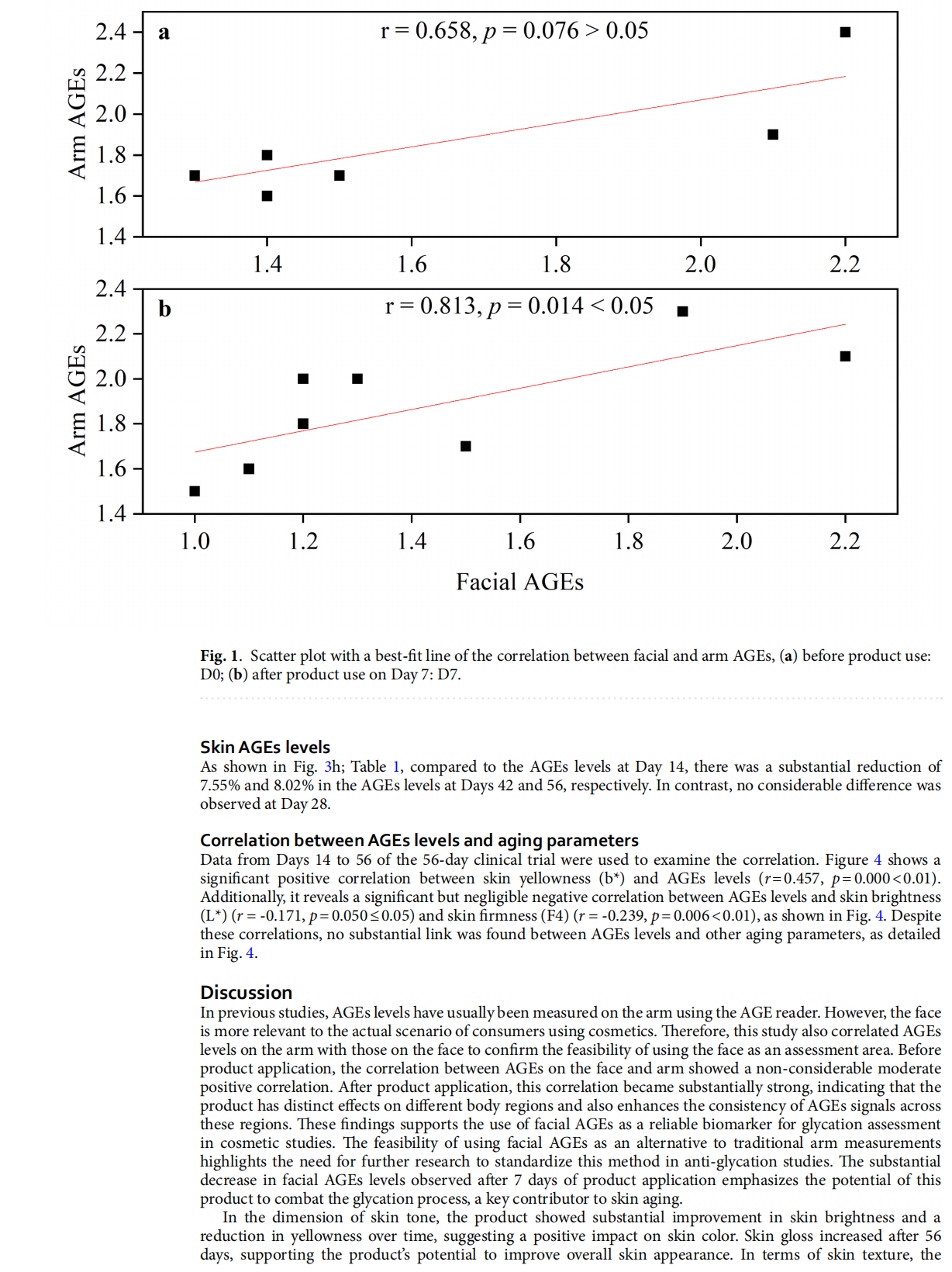









This article is excerpted from the Scientific Reports | (2025) 15:1935 by Wound World.
Qin Zhang1, Dangdang Cheng1,2 & FeifeiWang3
This study aimed to develop in vivo methods for assessing facial anti-glycation and anti-aging effects and to investigate the link between glycation and aging signs. We utilized an AGE reader to measure AGEs levels on the face and arms, establishing a correlation to validate the reader’s use for facial AGEs detection. Then the product’s 7-day anti-glycation effect was evaluated. And its 56-day anti-aging effects were evaluated using non-invasive probes and VISIA CR, assessing skin tone (skin brightness L* and yellowness b*, skin gloss), texture (skin elasticity R2 and firmness F4, skin pores), and hydration (skin moisture content). Correlations between facial AGEs levels and aging parameters were analyzed.
Results indicated a strong correlation between facial and arm AGEs after product application, supporting facial AGEs level as an assessment parameter. The product demonstrated substantial antiglycation and anti-aging effects, suggesting the methods’ efficacy for cosmetic evaluation. A stronger overall correlation was found between AGEs levels and skin tone than with skin texture and hydration, highlighting glycation’s impact on skin color.
Keywords AGE reader, Anti-glycation evaluation, Anti-aging evaluation, Glycation-aging correlation










This article is excerpted from the Scientific Reports | (2025) 15:1935 by Wound World.
